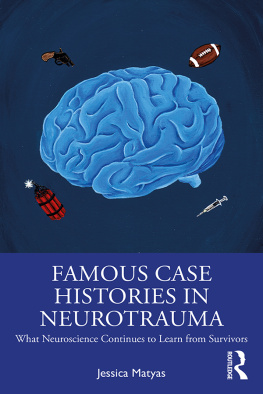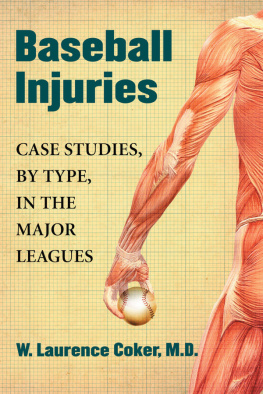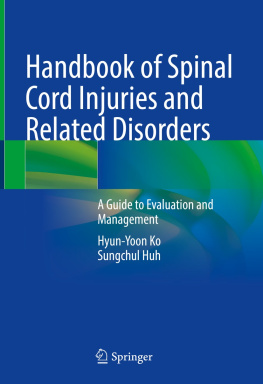Famous Case Histories in Neurotrauma
Using a popular case history format, this book presents a scientific history of neurotrauma. It covers a range of well-known cases, including Roald Dahl, James Brady, and Walter Freeman to give insights into a variety of neurotrauma causes and effects, from aphasia and amnesia to lobotomy and mercury toxicity.
Cases are connected to clinical research methods, exploring how these methods have changed over time and illustrating how these cases are still relevant as we continue to learn about recovery from brain and spinal cord injuries. Focusing on individuals who survived their injuries beyond the acute phase, the book highlights the long-term behavioral effects of the injuries and provides estimates for prognoses and recovery pathways in acknowledgment of naturally occurring neuroregeneration. With helpful key term definitions, Matyas distinguishes fact from fiction to give an accurate account of a wide spectrum of cases and highlight what we can learn from them.
Famous Case Histories in Neurotrauma is valuable reading for students in behavioral neuroscience, clinical neuropsychology and related fields.
Jessica Matyas is the Chair of the Department of Psychology and Behavioral Sciences at Rochester University, located in Rochester, Michigan, with research and teaching experience. She has previously published in the area of spinal cord injury and is an authority in this aspect of CNS trauma.
First published 2021
by Routledge
52 Vanderbilt Avenue, New York, NY 10017
and by Routledge
2 Park Square, Milton Park, Abingdon, Oxon, OX14 4RN
Routledge is an imprint of the Taylor & Francis Group, an informa business
2021 Taylor & Francis
The right of Jessica Matyas to be identified as author of this work has been asserted by her in accordance with sections 77 and 78 of the Copyright, Designs and Patents Act 1988.
All rights reserved. No part of this book may be reprinted or reproduced or utilized in any form or by any electronic, mechanical, or other means, now known or hereafter invented, including photocopying and recording, or in any information storage or retrieval system, without permission in writing from the publishers.
Trademark notice: Product or corporate names may be trademarks or registered trademarks, and are used only for identification and explanation without intent to infringe.
Library of Congress Cataloging-in-Publication Data
Names: Matyas, Jessica, author.
Title: Famous case histories in neurotrauma / Jessica Matyas.
Description: New York, NY : Routledge, 2021. | Includes bibliographical references and index.
Identifiers: LCCN 2020014274 (print) | LCCN 2020014275 (ebook) | ISBN 9780367442859 (hardback) | ISBN 9780367442835 (paperback) | ISBN 9781003008798 (ebook)Subjects: LCSH: Nervous systemWounds and injuriesCase studies. | Nervous systemWounds and injuriesPatientsRehabilitationCase studies.
Classification: LCC RD593 .M386 2021 (print) | LCC RD593 (ebook) | DDC 617.4/8044dc23
LC record available at https://lccn.loc.gov/2020014274
LC ebook record available at https://lccn.loc.gov/2020014275
ISBN: 978-0-367-44285-9 (hbk)
ISBN: 978-0-367-44283-5 (pbk)
ISBN: 978-1-003-00879-8 (ebk)
For all those currently living with the after-effects of brain and spinal cord injuries, whose prognoses were so grim it took away their hope: There is always hope. Keep moving forward!
In addition to the individuals and families of those who allowed me to use their remarkable stories in this collection of case histories, Id like to especially thank my loved ones for supporting me throughout the production of this book. A special thank you to my dad for reminding me that I should keep doing what makes me happy, to my mother for inspiring me to study neurotrauma in the first place, my sister for always being excited to hear a weird or gross new story, and my friends for putting up with my constant does this sound okay proofreads. You guys are the best!
The field of neuroscience is among the youngest of sciences, and arguably one of the most heavily interdisciplinary sciences, integrating biology, chemistry, medicine, and psychology together into a single broad field. While its origins and official start as a unique field is debated, we can reach a consensus on the fact that many of the early findings in neuroscience arose as a result of unique and, at times, confusing individual cases of injury and illness. In particular, traumatic injuries that would traditionally have been fatal now are addressed by rapidly improving technology and medicine, allowing individuals to not only survive, but recover from damage to the brain and spinal cord, an area now known as neurotrauma. By acknowledging these ever-changing aspects of the field, we are able to revisit historical cases with new information and new ways of thinking, shedding light on mysteries that at the time were unexplainable. From anthropological records of trephination, or the boring of holes in the living skull, to the worlds most famous head injury, Phineas Gage, and modern findings such as those of James Bradys gunshot wound and Christopher Reeves equestrian accident, we will explore the history of neurotrauma as a subset of neuroscience, and how these remarkable case studies helped to shape the field as we know it, further connecting these to both traditional and currently used research methods.
If you are at all familiar with cinematic representations of mental hospitals, you likely hold an opinion that traditional treatment methods were somewhat barbaric. However, it is important to note that the major goal of any respectable science is to help others. The treatments that may seem awful or inhumane to us now were, at the time, the best options available to medicine and psychology. If you are in a field of science yourself, then you are all too familiar with the idea that we must do the best we can with what we are given. This is precisely what the professionals in these case histories did: The best with what they had at the time. It is all but guaranteed that in the next century, our successors will look back at our current methods in horror, calling us as barbaric as we now call the early twentieth-century physicians. Therefore, please keep in mind throughout the following text that true malice and intent to harm was extremely rare in this field, and that everything was done with the hopes that it would be helpful to others. We just have a long track record of getting things wrong. Such is the nature of learning.
Case studies in trauma are innumerable, as humans as a whole continue to find new and unusual ways to hurt ourselves. As such, only a small collection could be discussed in this volume. Those included here fit into a set of criteria, including first and foremost that the individuals or groups being discussed had to have survived their initial injuries or insults and lived for a significant amount of time afterwards. While comparisons will be made to certain disease states, the present cases also are exclusive to sudden trauma, whether brought on by direct impact or chemical/biological means. Therefore, an ischemic stroke fits the criteria for a case of neurotrauma; however, a degenerative disease like Alzheimers disease is too far-reaching and slow-moving, despite being equally as important to study.
There will certainly be aspects of each case that get missed or omitted, and for that I request forgiveness. Each of the cases discussed within this text are deserving of entire volumes on their own (and some do indeed already have books published about their cases). The summary versions here therefore have a different goal than typical case history texts. We will explore the cases themselves, the primary effects of each injury, and some of the more unexpected effects that may go overlooked at first glance.






